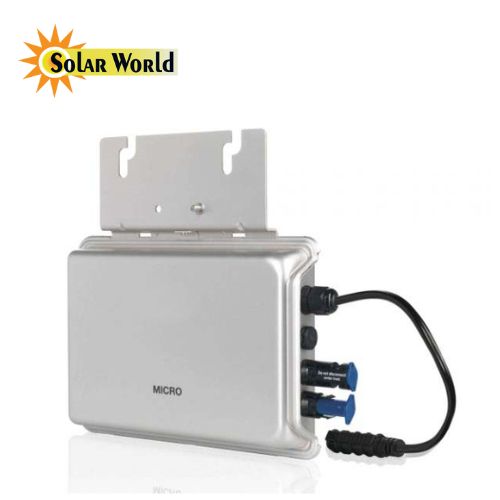Solar inverter, also known as photovoltaic (PV) inverter, is an essential component of a solar power system that converts the direct current (DC) electricity generated by the solar panels into alternating current (AC) electricity that can be used by the electrical grid and household appliances.
A solar inverter is placed between the solar panels and the electrical grid, and its main function is to control the flow of energy from the solar panels to the grid. The solar inverter constantly monitors the voltage and current produced by the solar panels and adjusts it to meet the requirements of the electrical grid. This helps to ensure that the electricity generated by the solar panels is consistent and of high quality, reducing the risk of damage to electrical appliances and increasing the overall efficiency of the solar power system.

Solar inverters are also equipped with various safety features including- over-voltage and under-voltage protection, over-temperature protection, and ground-fault protection. These features help to ensure the safe and efficient operation of the solar power system, reducing the risk of damage to the system and increasing its overall lifespan.

A micro inverter is another form of module-level power electronics that is gaining more popularity, particularly for residential solar systems. It is installed on each panel in a solar energy system and by this system, you can monitor the power production of each panel. They convert the DC electricity from your solar panels into AC electricity on your roof, without any separate central inverter. sometimes the microinverters are mounted onto the back of the solar panel itself, but they may also be mounted next to the panel on your solar panel racking system. Typically this system is more expensive than string inverters.


A micro inverter is another form of module-level power electronics that is gaining more popularity. Power optimizers can be a wise choice and may be a better fit for your needs than microinverters if you have partially shadowed situations or need to install with multiple orientations to the sun. Although microinverters address the same shade and roof orientation issues as power optimizers, their installation costs are higher.
Power optimizers use a technology known as maximum power point tracking to address this issue (MPPT). Smart experts discovered that your inverter can process significantly more electricity if you can monitor the maximum power of each panel in real-time and smooth and condition the electricity each panel creates before transferring it to the inverter.
Choosing the right type of solar inverter for your solar energy system depends on several factors, including the size of the system, budget, and desired features and benefits. String inverters are the simplest and most cost-effective option for smaller residential and commercial systems, while microinverters offer more flexibility and higher energy production, but at a higher cost. Central inverters are the best choice for larger commercial and utility-scale systems, but they also require more space and investment.
No matter which type of inverter you choose, it is important to work with a professional solar energy contractor who can help you determine the best solution for your specific needs and requirements. With the right inverter, you can optimize the performance of your solar energy system, increase its efficiency and reliability, and enjoy the benefits of
There are three string inputs on the inverter. This system is set up to link three strings of eight panels to each of the inputs, totaling 24 Solar panels.
There are 24pcs of solar panel in a String.
A micro-inverter, which is attached to each panel in a solar system, transforms DC electricity to 240v AC electricity at the solar panel.
The micro-inverter price depend on its brand and power capacity, you can get an inverter of average quality from 120$ to 160$.
The Micro-inverter has been designed for a service life of 20-25 years.